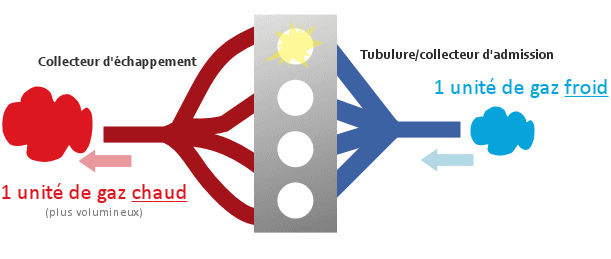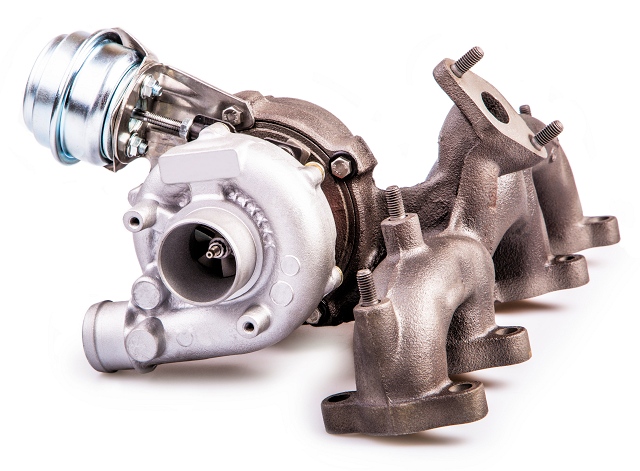The Turbo
- COCKPIT

- Dec 15, 2021
- 6 min read
The turbocharger, commonly referred to as a turbo in the automotive industry, is an engine supercharging system that aims to increase the power density of compression and combustion engines (gasoline and diesel).
Its invention dates back to 1902 when Louis Renault filed a patent on the principle of supercharging by fan or compressor, which he used in competition, but which had not yet been defined as a turbocharger.
In 1905, the patent for the principle of the turbocharger was granted to the Swiss engineer Alfred Büchi by the Deutsches Reichspatent (DRP) and a second for its application to the internal combustion engine.
In the years 1909-1912, Dr. Alfred Büchi developed the first turbocharger powered by engine exhaust gases. Three years later he came up with a prototype of a turbo diesel engine, but at that time his idea was not met with much enthusiasm.
In 1954, with the development of the first compact turbocharger model by Kurt Beirer, Cummins, Scania and Volvo began production of turbo-equipped trucks. It should also be noted that a car fitted with a supercharged Cummins engine took pole position in the Indianapolis motor race in 1952.
The fuel crisis of the 1970s along with increasingly stringent exhaust emission standards resulted in a significant increase in the popularity of supercharged trucks. However, the still low efficiency and high running cost meant that these engines were not used in passenger cars.
The real revolution came about in the 1980s with the appearance on the market of the Mercedes 300 series and the Volkswagen Golf, both with turbo diesel engines. This was the time when turbocharging began to be used in passenger cars and is applied there until today.

Principle of operation of the turbo
The principle of the turbo is as follows: the exhaust gases released by the engine turn a turbine (in red on the diagram). This turbine is connected by an axis to a second propeller (in blue) which will have the role of sending a large mass of air towards the intake (the air which accumulates ends up being compressed, hence the name turbocharger). This compressed air will be sent into the engine then increasing the supply of oxygen (which is about 20% of the air passing through) in the combustion chamber, thus promoting power (the more air there is, the more fuel you can put).
Composition of the turbo
A turbocharger is made up of two interconnected "propellers" (a turbine and a compressor).
Today there are several types of Turbos:
Fixed geometry turbos: To increase power at low speed, the gases enter the turbine through a narrow pipe which increases the pressure. To prevent overpressure, a valve evacuates the gases. This type of turbo is still the most common today. The turbine rotates at speeds between 15,000 and 240,000 revolutions per minute.
Variable geometry turbos (Invented by GARRETT): Developed in the 90s to allow better use of gases, the pressure is regulated thanks to a device which means that the more the pressure increases, the more the turbine lets through, it is the Turbo "One piece" system.
Another system uses a much more sophisticated "Multi-fin" technology. The orientation of the fins is electronically controlled.
Bi-turbo
Usually only one turbo is found on cars, due to the high cost of this mechanism. However, some of the most efficient engines are fitted with two turbos (bi-turbo).
In the case of a so-called "series" assembly of two identical turbos (that is to say that the turbos are one after the other), the first is active even when the engine speed is low and the engine speed is low. second is activated when the engine speed becomes higher. Thus, the engine is made even more efficient, even if the engine speed is low.
In the case of sequential or double-stage editing, the two turbos are not the same size, but the principle is similar. The smaller turbo is active at low engine speed and is helped by the larger turbo (which has higher flow) as soon as engine speed increases. Once the revs are high, the bigger one works on its own.

Intercooler or exchanger?
To increase the capacity of the turbo (and more broadly the air intake), the compressed air must be cooled. Indeed, it is necessary to know that any gas which one compresses gains in temperature, it is an elementary physical phenomenon.
By compressing the air, the turbo ends up heating it ... Unfortunately, sending hot air (therefore dilated) into the engine is not ideal (the colder the air, the less space it takes up, we can so put more cold air in the same volume than hot air) ...
To overcome this, we invented the intercooler which simply allows the air compressed by the turbo to be cooled before sending it into the combustion chambers.
Is the turbo going electric?
More and more elements have become electric in our cars, this helps reduce fuel consumption. This is also the case with electric power steering which allows you to consume nothing in a straight line (when you do not turn the steering wheel) unlike a pump operating by the force of the engine (accessories belt).
The turbo is now in the crosshairs with more and more equipment manufacturers thinking of making it electric. The proliferation of hybrid cars (a lot of electrical resources thanks to batteries) seems to favor this phenomenon.
From a technical point of view, we can say that we are dealing here with a fusion between the turbo and the compressor (turbo because it runs at very high speeds and compressor because it is not supplied by gas from exhaust).
Boost your turbo
There are two ways to improve the performance of its turbo:
Modifying the wastegate makes it possible to increase the pressure of the turbo at the intake (be careful, this must be done by professionals);
Change the intercooler for a larger model in order to cool the air better (and therefore to put more in the engine since the cold air takes up less space).
The turbo: friend of downsizing
With high pressure injection, the turbo is one of the pillars allowing the reduction of the displacement which is more and more fashionable to reduce fuel consumption. In a way, it allows the engine's displacement to be artificially enlarged because it allows more air to be engulfed in it (as if its cylinders were finally bigger).
Symptoms of malfunction
Sometimes there are symptoms that are easy to identify and indicate that the turbo is malfunctioning. If there is excessive noise and a loss of power accompanied by blue fumes, all you have to do is change the turbo. If black smoke is emitted and the car jerks, it is the variable geometry control system that is affected. This is often due to turbo fouling. In this case, cleaning the system is often sufficient to resolve the problem.
Advantages :
High power for low displacement (Downsizing)
Small footprint for tight installation conditions
Higher torque at low revs
Lower noise emission
Specifically favorable fuel consumption
Disadvantages:
As the exhaust gases are used to set the turbine in motion, their evacuation is made more difficult. The very high rotational speed of the turbo creates an additional risk of engine malfunction. Indeed, if the end of the turbine blades (which are used to turn the wheel) reaches a transonic (equal to the speed of sound) or supersonic (greater than the speed of sound) speed, the turbo is destroyed. This speed of rotation must therefore be absolutely controlled. If the turbo breaks, the engine can continue to operate but its efficiency is much lower and performance is severely degraded. Also because of the very high speed of rotation, the blades of the turbine and the compressor must be perfectly balanced. If they are not, the two wheels (of the turbine and the compressor) can go off-center slightly and create severe damage. The turbo is subjected to severe thermal stresses. On the turbine side, the exhaust gases are very hot (over 800 ° C for a diesel engine and over 1000 ° C for a gasoline engine) and on the compressor side, the air drawn in is at room temperature. The materials used to manufacture this system are therefore specifically designed to withstand such stresses, which explains the high price of a turbo. When accelerating, the turbo does not compress enough air at first and the driver sometimes feels a kind of "jump" in acceleration which can be unpleasant. This jumpiness is related to the time it takes for the turbo to compress enough air. To reduce this latency, car manufacturers use electric turbos or variable geometry turbos.
Nowadays :
Turbochargers are widely used in the automotive industry, for cars as well as commercial vans, as they reduce fuel consumption, reduce pollutant emissions and increase engine power.










Comments